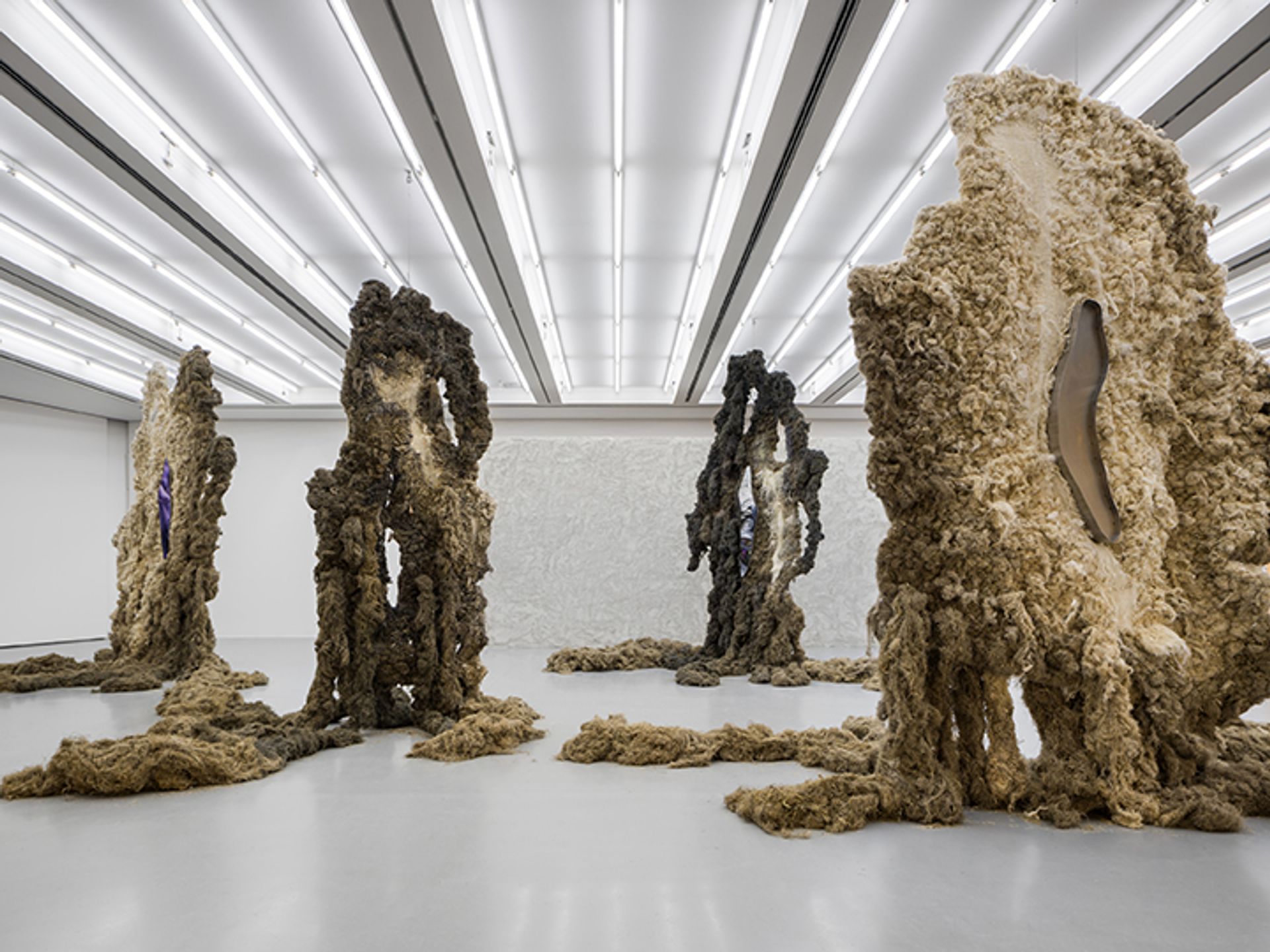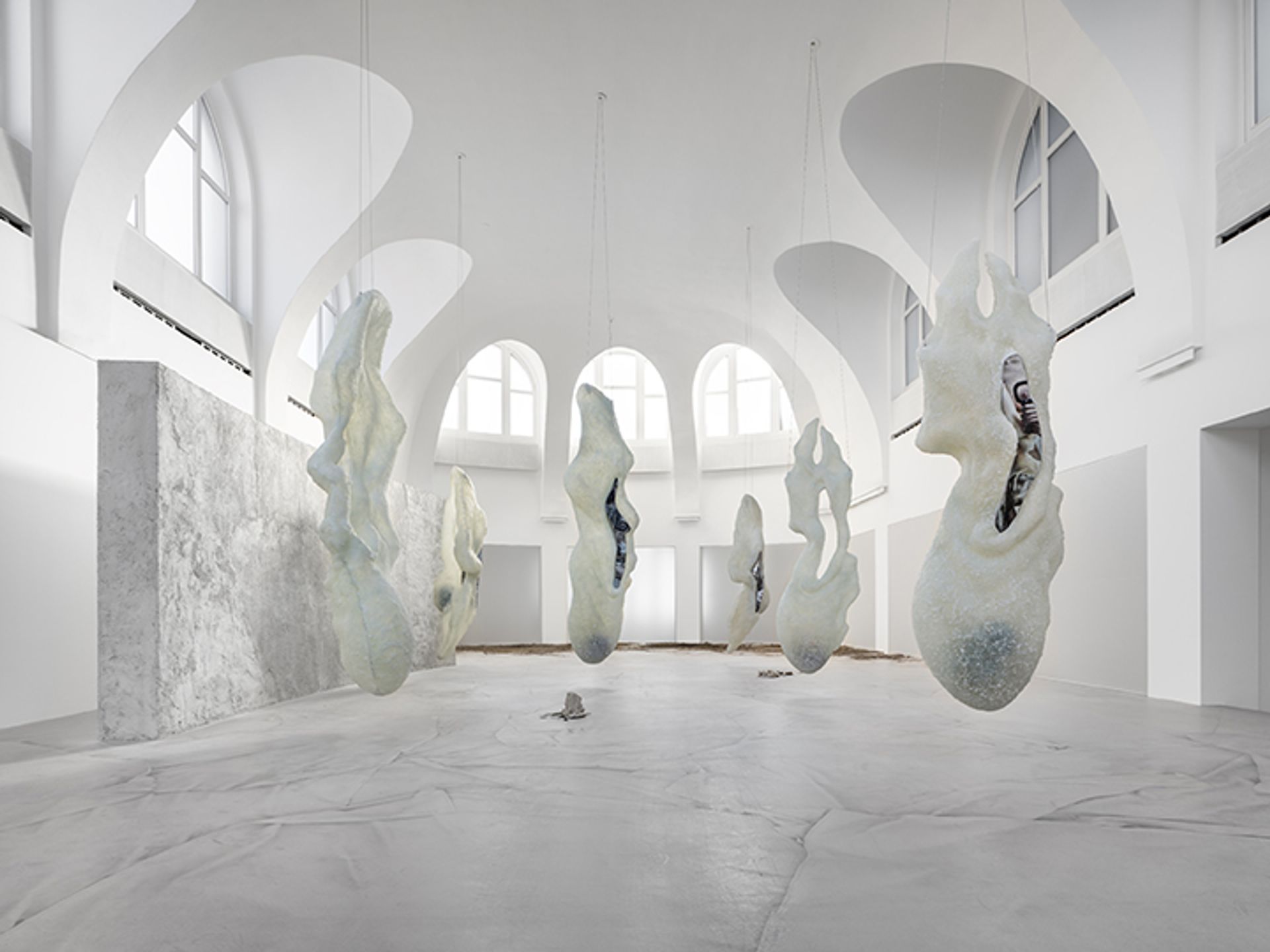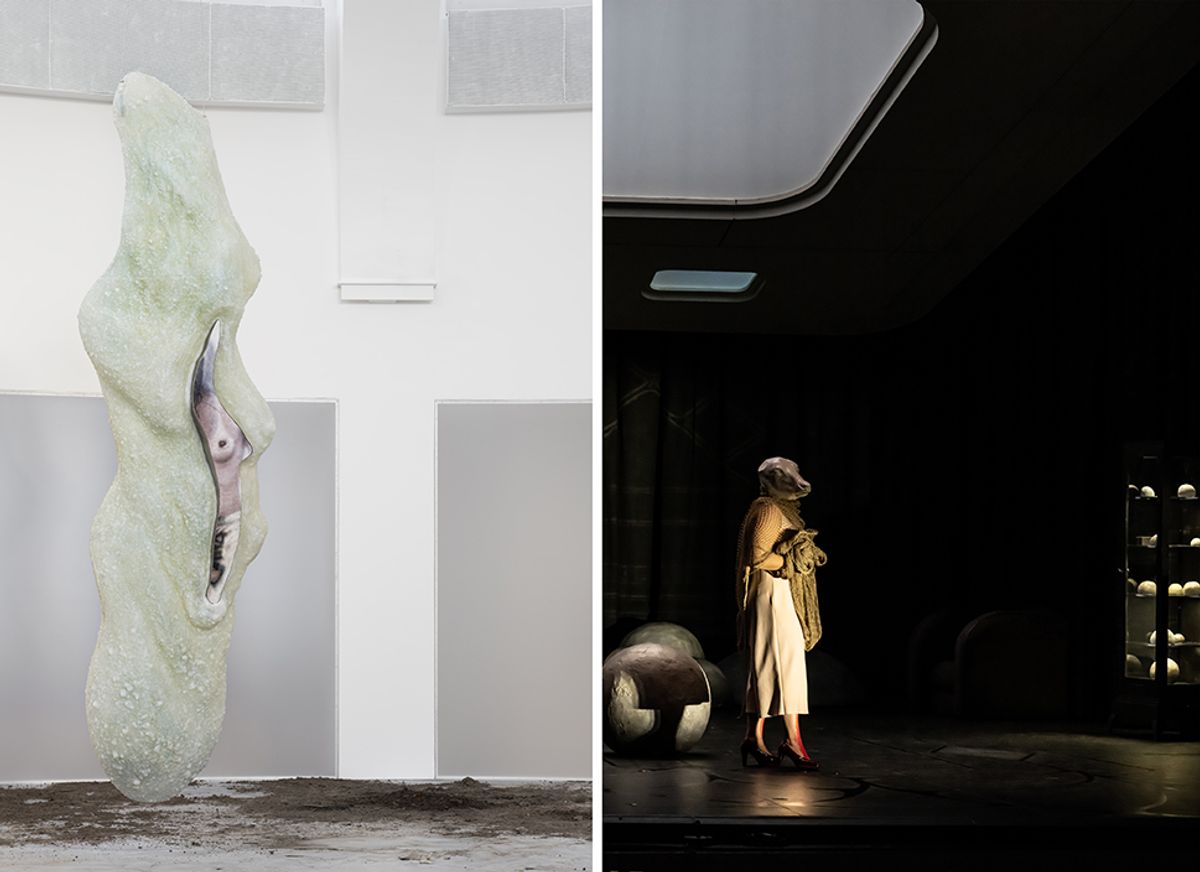On 11 March, Staatsoper Hannover opened its thrilling new production of Czech composer Antonín Dvořák’s 1901 opera Rusalka (in repertoire until 27 May). Directed by Tatjana Gürbaca, Rusalka tells the story of a water nymph who, having fallen in love with a prince, longs to be human. The human world is brutal, and the prince rejects her. In her production, designed by Klaus Grünberg with costumes by Barbara Drosihn, Tatjana’s Rusalka is an idealistic young woman who is mocked and abused by the humans, and by her sisters who do not understand why she yearns to be part of humanity. In the most famous aria, taught to generations of Czech schoolchildren, Rusalka prays that the moon will shine its light on her beloved and tell him that she is waiting.
Grünberg’s set is filled with hard moon-like rocks on which the nymphs play in their flowing silk nightgowns. In the human realm, these rocks are kept in glass cabinets, and at the party the prince throws for Rusalka, his guests fling them around while they swill cocktails and dance a nightmarish choreography. The prince finds a new lover, and he brings her along wrapped in their bedsheet, and even proposes marriage to her in front of the confused Rusalka who cannot express herself except by trying to kiss him. He throws her off more and more violently.

Rusalka by Antonín Dvořák at the Staatsoper Hannover © Sandra Then
Gürbaca’s production expunges any suggestion of kitsch from an opera inspired by fairy-tales. Love is cruel and unforgiving, and the final image is identical to the first: a young woman reaching up to the heavens, ever hopeful. Is happiness always out of reach, or does Rusalka see that the possibilities of life are greater than she imagined?
The day after seeing the opera, I visited the Kestner Gesellschaft, a gallery in a converted women’s swimming pool in the city. There I found more than just this watery connection with Rusalka. To Infinity (until 4 June) is the first solo exhibition by another Czech artist, Klára Hosnedlová (born 1990) and it is a fantastic debut.
In the two galleries that were the main pool, Hosnedlová, who recently joined White Cube gallery, presents a pair of installations. On the ground floor, large suspended organic sculptures with exposed tapestry structures like the skeletons of ossified pupae hang like animal carcasses in an abattoir. At the centre of each is a small, exquisite fragment of a sculpted woman, housed within a stainless-steel container reminiscent of a surgical kidney dish. The pictures are embroidered, and their ultra-fine silk threads give the painterly impression of brushstrokes. The wool and linen sculptures are thick and sensual, and the room smells strongly of organic matter. In corners and on the stairs leading to the upper gallery lie piles of wool, as if discarded by those who displayed the once-living objects, or shed by the cocoons themselves. A single small image of a snake is hidden at the end of a long corridor illuminated by yellow fluorescent tubes.

An installation view of Klára Hosnedlová's To Infinity at Kestner Gesellschaft in Hannover © Courtesy of the artist, Kraupa-Tuskany Zeidler, Berlin, White Cube, London, Foto: Zdeněk Porcal - Studio Flusser
Upstairs, the suspended sculptures are made of hard, cold resin, and smell of wax or soap, rendered—like the windows through which visitors once gazed at the female bathers—opaque milky white. They also provide a housing for embroidered fragments, but in these images, female figures present parts of their bodies through futuristic magnifying lenses. The linoleum floor is printed with a repeated motif of industrially stencilled bedsheets. The two galleries are in strong contrast: downstairs the female body is revealed through thick layers of protective warmth; upstairs the images are held within crystallised but seemingly delicate shells.

An installation view of Klára Hosnedlová's To Infinity at Kestner Gesellschaft in Hannover © Courtesy of the artist, Kraupa-Tuskany Zeidler, Berlin, White Cube, London, Foto: Zdeněk Porcal - Studio Flusser
While the upper and lower installations are related, it is not clear if one is an echo or prefiguring of the other, or if they are somehow reflecting each other through a distorted mirror. I was struck powerfully by the connection (as far as I know coincidental) with Gürbaca’s Rusalka. The organic life of Dvořák’s naïve Rusalka, who cherishes bits of plastic and a broken pair of glasses discarded by humans as if they were precious treasures, versus the cruel human society that joylessly consumes everything in sight. In Hosnedlová’s rooms, our glimpses of womanhood are by turns swaddled and imprisoned within their womb-like nests, the contrast here being between the soft warmth of the organic wool and the brittle and impenetrable resin shells.
Downstairs I had the impression that we were being offered a peek into a safe space and the women sheathed within were mostly unaware of our gaze; upstairs I experienced an uncomfortable voyeuristic sensation—that these fragmentary women were being kept immobile and were engaging with the viewer directly by offering us close-ups of their bodies. Have their warm safe beds become prisons because of our non-consensual inspection of them?

Rusalka by Antonín Dvořák at the Staatsoper Hannover © Sandra Then
What both artists are ultimately interested in is the female body in space: how she is held, how she is observed, and how she is in a constant struggle to find her own path and destiny. Rusalka, like Hosnedlová’s women, is held within a seemingly safe space. She longs to escape for the adventure of another world, but this world is a cruel and brutal place where she must walk rather than swim in the warm water below. Her longed-for freedom is in fact another form of imprisonment, and she trades an overbearing father and scornful sisters for a fickle and unloving prince and his society that derides her for being different. The freedom she is denied is the freedom to choose her own destiny. The context of both works is also striking: the seeming incompatibility of the natural organic world to survive with our endless desire to consume it out of existence.


